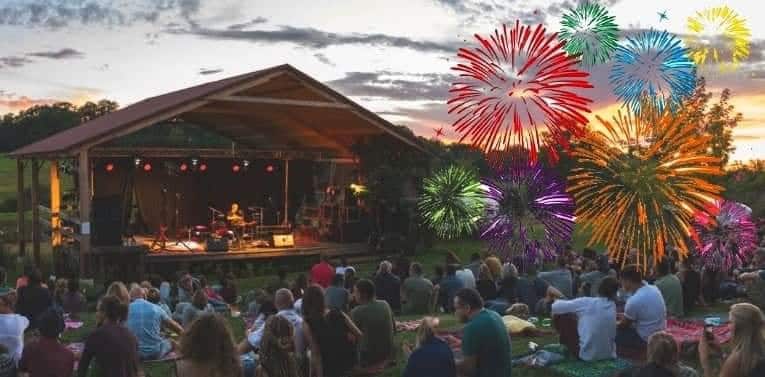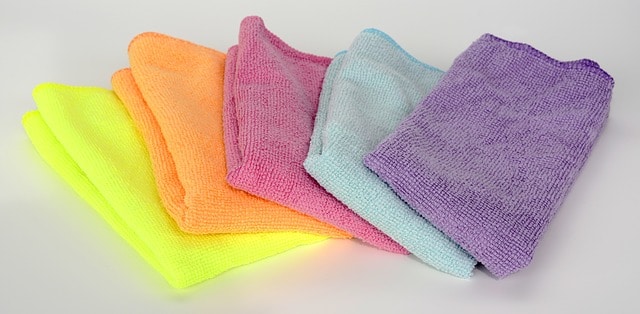How to Amplify a Handpan | Not as Easy as You Think
The opening gambit on this article is to consider that every handpan is different from the next. Even within a single brand from a single maker. Therefore, what might be good for the goose may not be good for the gander. On this basis, this guide will provide the best practice in searching out what microphones and methods are generally best for handpan amplification.
What is the best Microphone for a handpan? – The best microphone will depend upon the situation in which the handpan will be played. For performance the AKG411 Contact or Shure SM58 Dynamic are great.
Read on to discover my findings and recommendations for what equipment to aim for when looking to amplify your handpan for recording or performance
Complete Guide to Microphones and Amplification for Handpans
To begin with, I am looking specifically at microphones. What the microphone leads into in terms of a mixer, amplifier or loop station means little if the microphone is not right. To that end, this guide is purely for microphones with some token gestures for amplifiers at the end.
There are two things to consider when looking for a mic, and they depend on what situation it is needed.
- Amplification for Performance
- Amplification for Recording
The two scenarios will be very different. With performance, whether that be busking in public or performing on stage, there is likely to be at least some form of background sound that you want to avoid picking up as much as possible.
In the studio, you can be confident background noise will be at a minimum or completely absent if recording in a booth.
Best Microphone for Performance with Handpan
Here you need a microphone that will pick up the subtle tones of your handpan and not any passing foot traffic is in the street, or chatter and backstage noise if on stage. Also, if playing with other performers, ensuring that the microphone is directed optimally to pick up your instrument alone is key.
There are two options, again depending on the public performance setting
- Contact Microphone like the AKG C411 [click to see the current price on Amazon]
- Dynamic Microphone Shure SM58-LC Cardioid Dynamic [click to see current price on Amazon]
Best Contact Microphone for Handpan
An ideal microphone in this instance would be a ‘contact microphone’ like the AKG C411 [click to see the current price on Amazon]
The contact microphone is connected directly to the handpan, and thus picks up the tone through being constantly in contact. An excellent choice if looking to amplify on stage or if playing with other instruments. For one, it negates feedback as it will only pick up the instrument it is attached to. Secondly, those low bass sounds that are tricky to pick up will come through thanks to the direct contact.
The disadvantage of a contact microphone on the best handpans is that the tone may be dulled slightly as it will be picking up the sound from inside quite directly. That said, the benefit of being able to be heard from a distance somewhat offsets the loss of the ‘up close and personal sound’ and what is lost in amplification would be lost with other instruments in any case.
Best Dynamic Microphone for Handpan
Options can be wide for Dynamic microphones. Indeed the price range can be just as wide, ranging from anything around $50 up the top end of pricing for the Beyer M88 [click for the latest price on Amazon]

I have long been [30 years+] a loyal user of the Shure range of microphone so hold a level of bias. Arguably the best dynamic vocal microphone on the market and seen on just about any huge music festival or stadium concert is the Shure SM58. In terms of value, I firmly believe they can not be beaten.
In 30+ years of rigorous use I have gone through only 6 Shure Sm58 microphones, the first lasting fully ten years before I needed to replace it.
I’ve been using Shure Sm58 Dynamic mics since November 1987
Word of Warning – I bought my last SM58 in October 2019. I elected to buy one with a switch for the first time. It makes no difference to the performance of the microphone. That is true, but the ability to switch it off has caught me out more than once since.
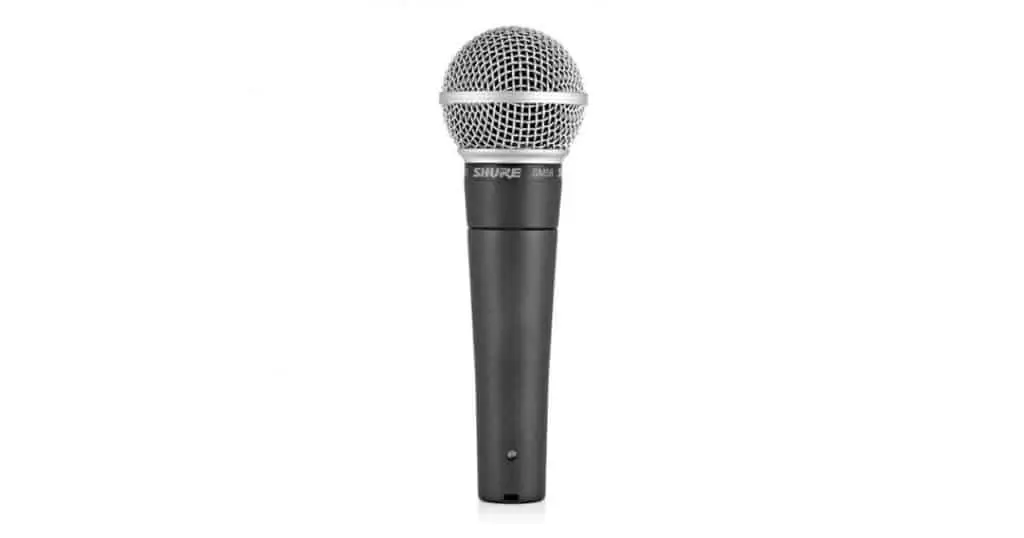
More advantages of the Shure SM58
- The best live vocal mic in my opinion
- works well in tandem with a contact mic
- Brightened midrange and bass roll-off
- Cardiod pattern provides more versatility in position
Best Microphone for Recording with Handpan
There are a huge number of Ribbon microphones for recording available in the market and on Amazon. I say with all confidence here though, the more you pay the more you will get. This is never truer than with ribbon microphones. They can run into the thousands of dollars or comes as cheap as under $100. I would not consider anything below $500.
The reason you should spend more money on a ribbon recording microphone is that you want to reproduce as faithfully as you can the music you make. Imagine playing a beautiful composition on your handpan only for it to reproduce sounding nothing like you played. You will be judged on what is heard, or effectively on the quality of your microphone.
This is an area not to scrimp!
I have two suggestions based on your budget, bearing in mind that as I said before, ‘you get what you pay for’
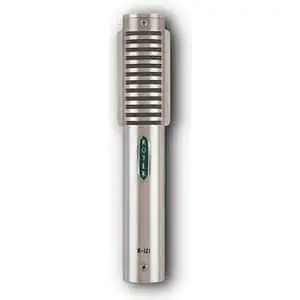
If you are going for the ultimate studio recording experience, then the Royer 121 is a must. [check Amazon for a latest price]Possibly one of the most famous studio microphones on the planet, you are guaranteed a stunning reproduction of the sound of your handpan in the studio. You will be paying over $1000 however.
That is not to say you can not get a fantastic quality recording from a cheaper studio ribbon microphone.
Best for under $500
As close as you could get Without getting to the amazing recommendations below would be the BayerDynamic M160, [Check the current price on Amazon] which would be a shade over.
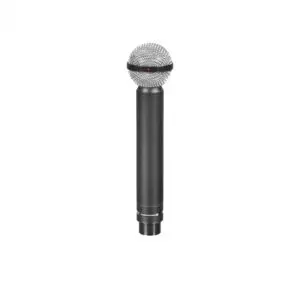
This Mic is truly excellent, and do not worry, it will record the natural sound of your handpan very faithfully, despite being perhaps only 30% of the price of the Royer.
More Affordable Recording Mics for Handpan
Behringer C-2 Studio Condenser Microphones, Matched Pair
Behringer C-2 Review – Conveniently small, cheap and simple to use, there are better small condenser mics on the markets, but for simplicity and value for stereo recording, Behringer, who do make far more expensive mic equipment, has produced an SDC that delivers excellent value and has remained super popular on the market as testament to that.
![Behringer C-2 Condenser mic [Pair]](https://cdn-0.coolpercussion.com/wp-content/uploads/2020/02/behringer-c-2-studio-mic-1-1024x1024-1-300x300.jpg)
Sound Quality
One of the attractive things about the Behringer C-2 matched pair, [apart from the crazy cheap price] is the clarity with a perfect balance of brightness it delivers in conjunction with a xylophone. It just manages to naturally roll off some of the initial mallet strike harshness you can sometimes get which other mics do not ignore.
The reproduction is not going to match $1500 of Royer Ribbon mic but for the purpose, we are looking that’s exactly what I want.
Durability
Relatively lightweight and small, there is little damage you can do to the C-2 without making a concerted effort, or dropping them once too often. Once is too often of course but you get what I mean. Sturdy in construction in a powerful little model, the XLR sockets are well presented too and do not deteriorate with continual connection and disconnection.
Value
What more can I say? The very reason they are on the list is that I like value, and along with the Shure SM-57 following this review, the value of these can not be beaten. You will pick up a pair for less than $75. That’s TWO small condenser microphones that perform brilliantly for a fraction fo the price of some studio mics
Design
The compact design of the C-2’s offer good options above percussion which is why they are so popular in the field. Picking up from good distance overhead, they are perfect for the most flamboyant of mallet players, providing enough pick up to allow space.
Shure SM-57 Cardioid Dynamic Instrument Microphone
Shure SM-57 Review – What you have with the Shure SM-57 is the most durable instrument amplification microphone on the market. For around $100 you’ll not find a harder wearing, die-cast steel, shock protected, cardioid polar pattern, value instrument mic on the market. Proven by 20 years as the top choice of the touring sound crew microphone list.

Sound Quality
This is the go-to musical instrument performance mic across the entire industry and can handle being sat right in front of a guitar amplifier or directly on a snare drum. You’ll get no distortion no matter what level you are picking up.
However, it is a very direct microphone, which sits well for picking up the xylophone, although a single mic will probably not be sufficient as it’s real beauty is not picking up any bleed from elsewhere, including the width of your xylophone.
A minimum of 2 mics would be needed, ideally, 3, positioned left-right and center.
Durability
Arguably one of the most durable microphones on the market, the die-cast construction is designed for heavy handling and usage. I have an SM-57 which I have owned since 2004, has been to every gig I have worked, which still works perfectly today.
Value
Given you can still pick up a Shure SM-57 for less than $100, and my experience of durability and longevity with it, you’ll not find a better value instrument microphone. Yes there are better recording mics for studio environments, and yes, some more expensive mics will reproduce your xylophone sound better in some circumstances, but for an all-round performer, whether you are on the road or in the studio, this is by far the best value microphone on the market.
Design
Die-cast, directional and dynamic, the Shure SM-57 is perfect for performance-based instrument amplification, but also works really well as a vocal mic in the studio, if used correctly. It’s brother the SM-58, is preferred as a stage vocal mic given the unidirectional head, but we are not concerned with vocals here. It is a great option for miking underneath too.
More Stuff
For more gear I have used from instruments to accessories, check out my recommended gear page

